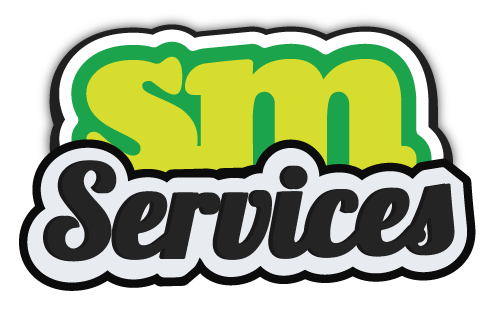Navigating the cannabis industry’s advertising landscape can feel like a daunting task. With strict regulations and platform restrictions, traditional advertising avenues often fall short. However, numerous alternative strategies can effectively boost your cannabis brand’s visibility and engagement. In this blog, we’ll explore various cannabis advertising alternatives to help your business thrive.
Challenges of Traditional Advertising for Cannabis
Traditional advertising channels such as Google Ads and Facebook often impose stringent restrictions on cannabis-related content. This makes it challenging for cannabis businesses to reach their target audience through conventional methods. The good news is that there are plenty of alternative advertising strategies that can circumvent these obstacles.
Social Media Marketing
Social media platforms offer a dynamic way to connect with your audience. While advertising restrictions exist, organic content and strategic influencer partnerships can significantly enhance your brand’s visibility.
Platforms to Use:
-
Instagram: Showcase your products and connect with customers through stories, posts, and live sessions.
-
Twitter: Engage with your audience through timely updates and industry news.
-
LinkedIn: Build your professional network and share educational content.
Content Strategies:
-
Post engaging visuals and educational content.
-
Utilize hashtags to increase reach.
-
Encourage user-generated content.
Influencer Partnerships:
-
Collaborate with influencers who align with your brand values.
-
Use influencers to create authentic content and reach wider audiences.
Content Marketing
Creating valuable and informative content is a powerful way to attract and retain customers. Content marketing helps establish your brand as an industry leader and drives organic traffic to your website.
Blog Posts and Articles:
-
Write about industry trends, product benefits, and usage tips.
-
Optimize content for SEO to enhance visibility.
Video Content:
-
Produce educational videos about your products and their benefits.
-
Share customer testimonials and behind-the-scenes content.
Educational Resources:
-
Create guides, eBooks, and infographics to provide value to your audience.
Search Engine Optimization (SEO)
SEO is essential for driving organic traffic to your website. By optimizing your site and content for search engines, you can increase your online visibility and attract potential customers.
On-Page SEO:
-
Optimize title tags, meta descriptions, and headers.
-
Use relevant keywords naturally throughout your content.
Local SEO:
-
Optimize your Google My Business profile.
-
Encourage customer reviews and citations.
Keyword Strategies:
-
Conduct keyword research to identify high-traffic terms.
-
Focus on long-tail keywords that match user intent.
Email Marketing
Email marketing is a cost-effective way to nurture relationships with your customers and keep them informed about your latest products and promotions.
Building a Subscriber List:
-
Offer incentives such as discounts or exclusive content for sign-ups.
-
Use sign-up forms on your website and social media channels.
Email Campaign Ideas:
-
Send newsletters with industry news and updates.
-
Promote new product launches and special offers.
Personalization and Segmentation:
-
Segment your audience based on preferences and behavior.
-
Personalize emails to increase engagement and conversions.
SMS Marketing
SMS marketing allows you to reach your customers directly on their mobile devices. It’s a highly effective channel for timely promotions and updates.
Benefits of SMS Marketing:
-
High open rates and immediate delivery.
-
Direct and personal communication channel.
Compliance and Best Practices:
-
Ensure compliance with regulations such as TCPA.
-
Obtain explicit consent from recipients.
Campaign Ideas:
-
Send promotional offers and discounts.
-
Provide order updates and appointment reminders.
Influencer and Affiliate Marketing
Leveraging influencers and affiliates can expand your reach and boost your brand’s credibility. These partnerships can drive significant traffic and sales.
Identifying the Right Influencers:
-
Look for influencers who align with your brand values and audience.
-
Consider micro-influencers for more engaged audiences.
Building Affiliate Programs:
-
Offer commission-based incentives to affiliates.
-
Provide them with marketing materials and support.
Measuring Success:
-
Track conversions and ROI from influencer and affiliate campaigns.
-
Adjust strategies based on performance data.
Event Marketing
Events provide an excellent opportunity to connect with your audience and showcase your products. Whether in-person or virtual, events can significantly enhance brand visibility.
Hosting and Sponsoring Events:
-
Host workshops, seminars, or product launches.
-
Sponsor industry events and conferences.
Virtual Events and Webinars:
-
Conduct online webinars to educate your audience.
-
Use virtual events to reach a wider audience.
Networking Opportunities:
-
Leverage events to build industry connections.
-
Engage with potential customers and partners.
Display Advertising
Despite restrictions, display advertising remains a viable option for cannabis brands, especially through programmatic advertising and compliant ad networks.
Programmatic Advertising:
-
Use automated ad buying to target specific audiences.
-
Monitor and optimize campaigns in real-time.
Banner Ads and Retargeting:
-
Design eye-catching banner ads to capture attention.
-
Implement retargeting strategies to re-engage visitors.
Compliance and Restrictions:
-
Ensure ads comply with regulations and platform policies.
-
Work with experienced agencies to navigate restrictions.
Collaborations and Partnerships
Forming strategic collaborations and partnerships can enhance your brand’s reach and credibility.
Cross-Promotions with Other Brands:
-
Partner with complementary brands for joint promotions.
-
Share audiences and expand your reach.
Community Involvement:
-
Participate in community events and initiatives.
-
Build a positive brand image through social responsibility.
Co-Branding Opportunities:
-
Co-create products with other brands.
-
Leverage each other’s strengths for mutual benefit.
Public Relations (PR)
A strong PR strategy can help manage your brand’s reputation and increase media exposure.
Crafting Press Releases:
-
Announce new products, partnerships, and milestones.
-
Distribute press releases to relevant media outlets.
Building Media Relationships:
-
Establish connections with industry journalists and influencers.
-
Pitch stories that highlight your brand’s unique value.
Managing Public Perception:
-
Monitor media coverage and public sentiment.
-
Address any negative press proactively.
Conclusion
In a restrictive advertising environment, cannabis businesses must be innovative and strategic. By exploring these advertising alternatives, you can effectively reach your target audience and grow your brand.
At Seedless Media, we’re dedicated to the organic growth of our cannabis and CBD clients. From nationwide brands to smaller local operations, our team finds sensible solutions to today’s complex and emerging cannabis culture.


